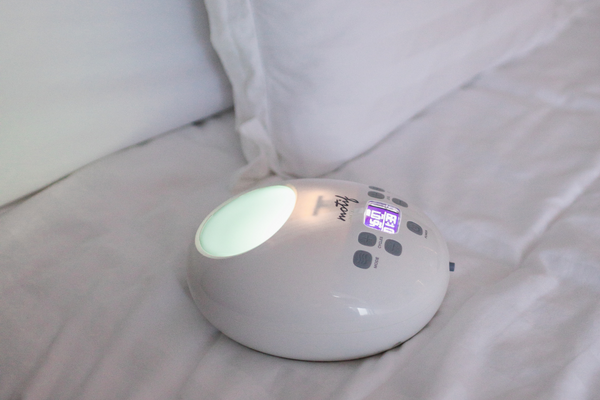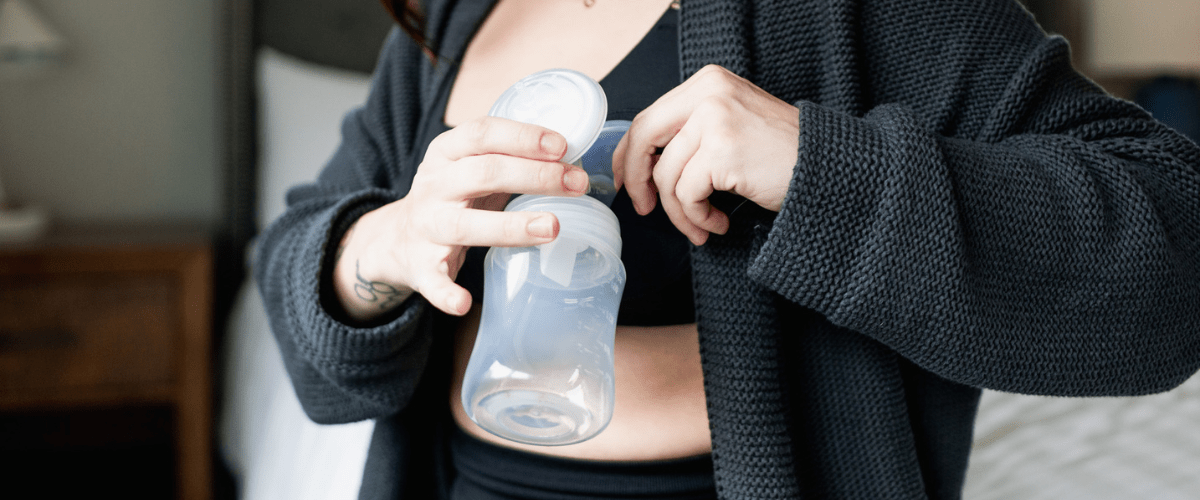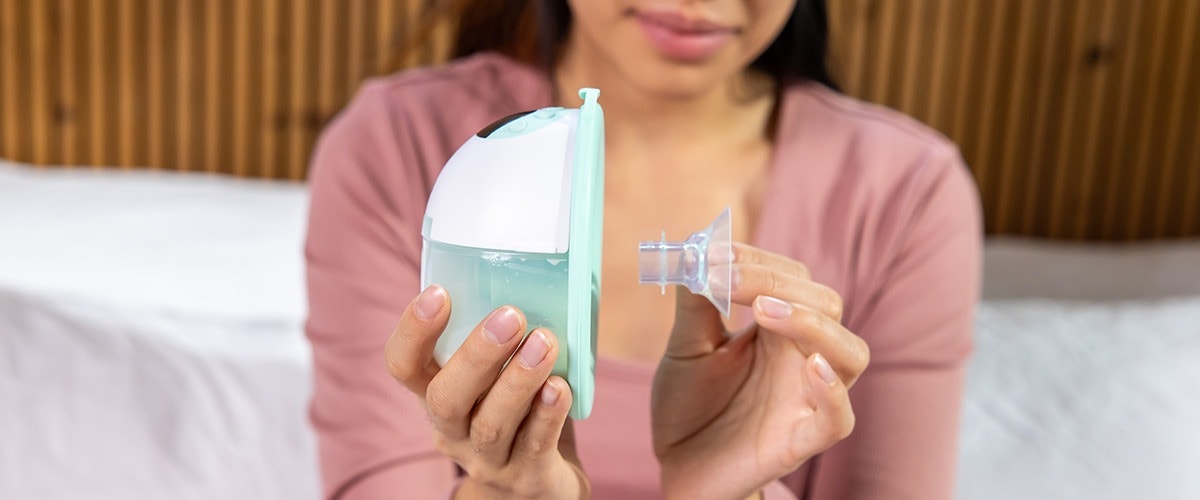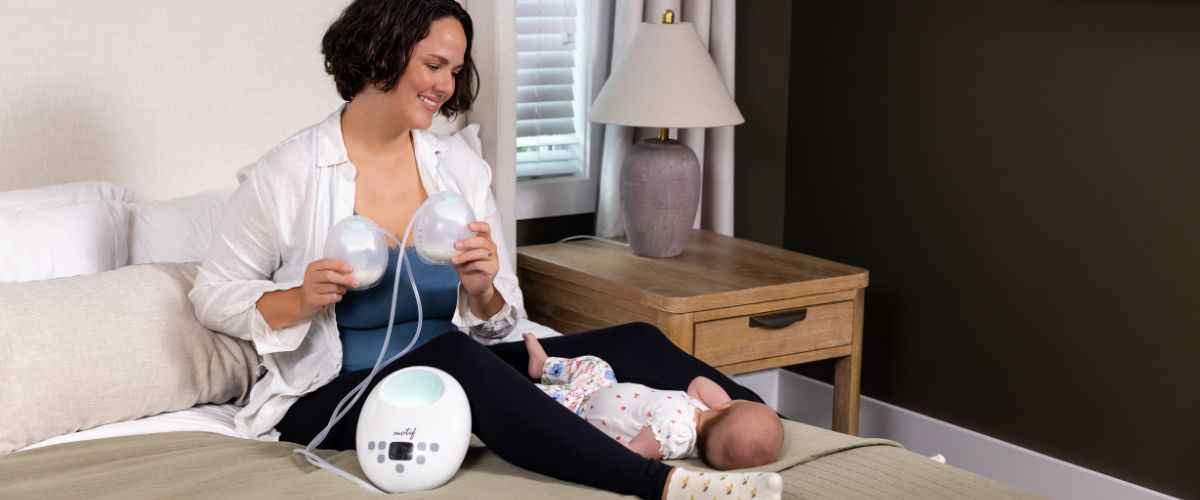Understand How Breast Milk Is Made
As a new mom, there is so much to learn! It’s not uncommon for my patients to tell me they spent so much of their pregnancy focused on labor, birth, and baby care to then be overwhelmed by all there is to learn about breastfeeding in the first weeks postpartum. Whether you’re preparing for a baby’s birth or your little one has already arrived, this breakdown of my top 5 ways to make breastfeeding more comfortable summarizes some key info you need to know to optimize your breastfeeding experience.
Knowing how breast milk is made is essential for getting breast milk production off to a good start. You may have heard that breast milk production is based on a supply and demand system, but what does that mean?
Hormones - in the first few weeks postpartum, your hormones get breast milk production started. Prolactin is responsible for milk making, and Oxytocin is responsible for milk release (letdown).
Colostrum - While your hormones get the milk-making party started, you won’t see ounces and ounces of milk right away. Colostrum is the perfect food for your newborn. Baby will be nursing frequently, drinking colostrum, and stimulating your breasts to ramp up breast milk production.
- If your baby is unable to latch and nurse effectively, begin using hand expression and pumping to remove colostrum and signal the breasts to make more milk. Motif Luna is a powerful breast pump for establishing breast milk supply.
Frequency of Milk Removal - Milk must be removed frequently and adequately for your breasts to continue making milk. Breastfed newborns should nurse 10-12 times per day. If you are exclusively pumping, you’ll need to pump at least 8 times per day for 15-20 minutes each session. Frequent milk removal is the path to having enough milk.
Full breasts send the signal to slow down milk production. For this reason, pumping for longer amounts of time less frequently results in a decrease in milk production.
- If being on the go makes it difficult to pump frequently, consider a portable pump like Motif Duo or a wearable pump like Motif Aura.
Transitional and Mature Milk - Milk production continues to increase and breast milk transitions from colostrum (thick and sticky) to mature milk (whiter and thinner). If you are concerned about low milk supply, seek guidance from an IBCLC (International Board Certified Lactation Consultant).
Latch Tips
Getting a deep latch is the foundation for comfortable breastfeeding. Babies need to take lots of breast tissue into their mouths for the nipple to be in a comfortable position during nursing. Pain is a sign something isn’t quite right. There are many possible reasons for a painful latch, but much of the time it can be improved with some simple changes to the latch technique. A deep and comfortable latch is also key to milk transfer. If the baby isn’t latched well, it can be difficult for him or her to effectively remove milk from the breast resulting in poor weight gain. A shallow latch and inadequate milk removal will eventually lead to a reduced milk supply as well.
Signs of a Shallow Latch
- Nipple pain or damage
- Nipple discoloration
- Rapid suckling, chomping, or nibbling with few or no signs of swallows
- Baby falls asleep quickly at the breast
- Baby frequently seeks food right after feedings
- Breasts don’t feel softer after feedings
- Baby’s cheeks are dimpled with feedings
- Clicking or smacking noises can be heard during feedings
- Nipples appear compressed or slanted (like a tube of lipstick) after feeding
Signs of a Deep Latch
-
Signs of a Deep Latch
-
Mom and baby are comfortable
-
Baby’s head is tilted back with chin pressed into the breast
-
Baby’s lips are flared out with a wide angle at the corner of the mouth
-
You can hear and see signs of swallowing
-
Movement is observed near the baby’s ears and temples during feeding
Keys to Getting a Deep Latch
Ears, Shoulders, and Hips in Alignment - No one likes to eat dinner with their head turned over their shoulder. Make sure the baby’s ears, shoulders, and hips are all aligned in a straight line and the baby is facing the breast.
Belly to Mom - Pull baby in close with his or her tummy pressed against you. Babies thrive on close contact as it helps them feel secure and relaxed.
Nose to Nipple - Make sure the baby’s nose is aligned to your nipple before latching. This will help the baby to open wide and will direct the nipple toward the roof of the baby’s mouth.
Cradle the Base of Baby’s Neck - Babies don’t like it when we push their head onto the breast. Cradling the base of the neck leaves space for the baby to tilt his or her head back for a nice, wide gape.
Chin First - If the baby has their head tilted back, it will be easier for the chin to come to the breast first. This anchors the baby and helps get lots of breast tissue in for a good latch.
*If you’ve tried the above steps but are still experiencing pain or noticing signs of a shallow latch, reach out to an IBCLC for help. Sometimes there are other causes of a shallow latch that a Lactation Consultant can help identify and make a plan to address.
Breastfeeding Positions
While a deep latch is vital for comfort and milk transfer, learning key nursing positions can help you get some much-needed relaxation. Breastfed newborns nurse 10-12 times in 24 hours, so knowing how to get comfy during nursing sessions is vital!
Support, Support, Support
The side-lying position can help you relax achy neck and shoulder muscles and provide some general rest while you’re feeding your baby. This position can be especially helpful if you’re recovering from a c-section. To master this position:
- Opt for a safe surface - No couches or futons. A firm mattress without soft bedding around is best.
- Tuck the arm closest to the bed behind your head and draw the baby’s body close. Remember to use all the deep latch tips listed above.
- Be sure the baby’s nose is aligned with your nipple and that you have him or her right up against your body. Baby’s LOVE all that body contact!
- Bonus Tip: make it a skin-to-skin contact session for a nice oxytocin surge. Oxytocin not only triggers your milk to letdown, but is also often called the “love hormone” as it plays a role in bonding with the baby.


Once the baby is latched, you may need to use a rolled-up towel or receiving blanket behind the baby’s back to help keep him or her in place. When it’s time to switch breasts, repeat the process.
Laid Back Breastfeeding
- This way of positioning a baby for breastfeeding is thought to be how our ancestors likely nursed it. It allows you to be comfortable and can trigger a baby’s instinctual feeding behaviors. Many moms even report improvement of latch issues when using a laid-back position.
- Move your hips forward slightly to recline in a chair, bed, or couch using pillows for support and comfort. You just want to recline a bit, not lie flat.
- Place your baby directly on top of you. Babies love to have their whole torso, the insides of their knees, and their feet against mom!
- Help your baby get their nose to the level of your nipple.
- Support your breast as needed.
- Allow baby to latch while gravity keeps him or her close.
Learn How to Breastfeed While Babywearing
Breastfeeding while wearing a baby in a carrier or wrap can give your arms a break and make it easier for you to nurse on the go. Moms who master this skill can comfortably nurse their babies while shopping, going for a walk, answering work emails, cooking supper, caring for other children, etc.
- Get comfortable with nursing and babywearing separately before combining the two.
- Know how to adjust your carrier or wrap to keep baby secure while allowing you to properly position baby for feeding.
- Always keep a hand and eye on the baby when feeding in a carrier or wrap.
- A rolled-up receiving blanket or burp cloth placed under the breastworks great if you need added support.
- If you loosen your carrier or wrap to make breastfeeding easier, remember to tighten it as soon as you finish feeding.
Flange Sizing
Whether you’re pumping occasionally or exclusively, a well-fitted flange is essential! Motif offers a wide range of flange sizes to optimize your pumping experience.
Sizing Basics
- Only the nipple should enter the flange tunnel. If your areola is being pulled in, the flange is too big.
- If you need to stuff your nipple into the flange tunnel, the flange is too small.
- Wait at least 2 hours after pumping or nursing before measuring your nipples.
- Measure both sides as they can be different.
-
Gently stimulate your nipples to get them to evert.
- Measure at the widest part (usually the base) in mm.
- Add 0-3mm to your nipple measurement to get your flange size. Most moms report that keeping the flange closely fitted to their nipples produces the most comfortable and effective results.
- Do a pumping trial. The goal is to find a size that provides a comfortable pumping experience and maximum milk output.
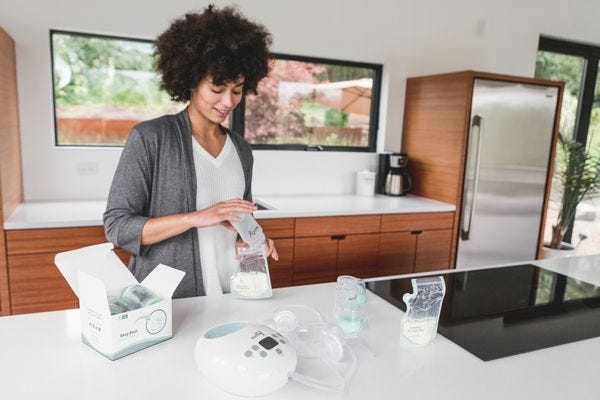

If you need help finding an ideal size, contact an experienced Lactation Consultant. Flat, inverted, or very elastic nipples can sometimes be difficult to size, but a Lactation Consultant can help.
Final Thoughts
While it’s impossible to convey everything you need to know to make breastfeeding more comfortable in this article, these five breastfeeding tips can serve as a good starting point. The most important thing to keep in mind is that nursing and pumping aren’t supposed to hurt. If you’re experiencing pain, don’t go it alone! Find an IBCLC to help make a feeding plan that works for you and supports your goals. Link up with a local or virtual support group so you can connect with other new mothers who are on this journey too. Having support can make all the difference!
Information provided in blogs should not be used as a substitute for medical care or consultation.



